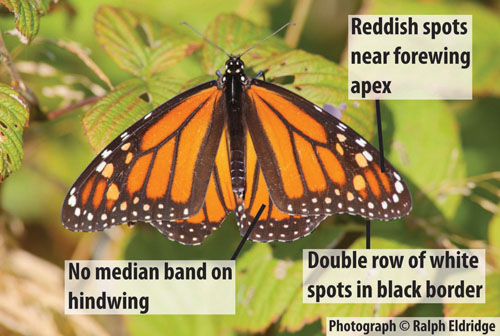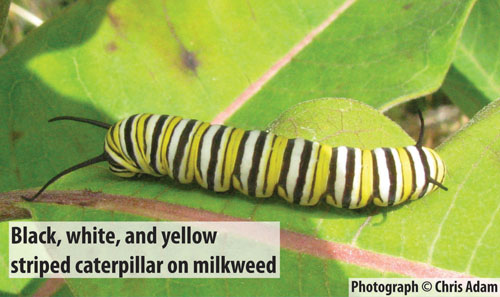Monarch (Danaus plexippus)
Description: A large black veined orange butterfly. The thick black wing margins have two rows of white spots. Viceroys are similar to Monarchs but are much smaller, have a transverse black line on the hindwing, and a single row of white spots on the wing margins. Wingspan: 93 to 105 mm.
Maritime Distribution: Widespread throughout the Maritimes. For Atlas results click here.
Provincial Ranks: NB: S3B, S3M. NS: S2B. PEI: S1B.
Flight Period: Adults arrive in May and June. Fall stragglers can be found into October.
Host Plant: Kansas Milkweed (Asclepias syriaca) and Swamp Milkweed (Asclepias incarnata).
Notes: The Monarch is a migrant species, and individuals can be found just about anywhere in the Maritimes. Numbers vary significantly from year to year, likely dependent on the weather conditions experienced during spring. This conspicuous species can be found in open habitats of all sorts. Monarchs gather in coastal areas in late summer, feeding on thistles and preparing for the 5000 kilometer journey to Mexico.
The Monarch is one of the best studied butterflies. They undertake a remarkable
migration, with all North American individuals from east of the Rocky Mountains traveling to a handful of sites in high altitude coniferous forests near Mexico City. These overwintering individuals migrate north in the spring, most reproducing in the southern US. It is usually this southern US generation that we see returning to the Maritimes in late spring. The number of Monarchs that return to the Maritimes varies greatly from year to year. Monarch is listed as Special Concern federally, due largely to threats to its limited overwintering habitats.


